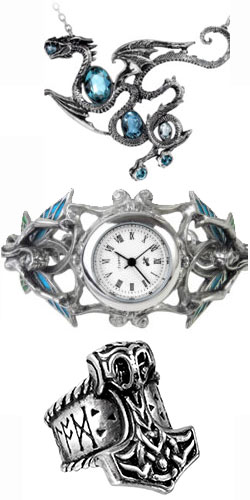How to Dress Renaissance
Capes and Cloaks; Form and Function

Capes and cloaks can add an air of mystique to any costume or outfit. While there is an undeniable function and effect that wearing a cape or a cloak can have, it is important to understand the difference in cloaks and capes that make them fundamentally different.
Capes
A cape has no sleeves, and goes around the shoulders and the back of the person wearing it. The major difference here is that a cape goes only goes partially down the back; usually to the shoulder blades. Capes fasten at the neck and were made of better, more lavish materials than cloaks and so they were the more fashionable choice. Capes fasten at the front of the wearer’s neck and generally don’t cover much around the front of the person. Capes, though seen as more fashionable than a cloak, are of the most basic design allowing someone with basic skills to craft one. The fashionable aspect of the cape lies in the material used to make it. Capes can be decorated with trim and collar decorations or even fur.
Cloaks
Cloaks, alternatively, are designed for function. They are made to fit long, loose and flow around the wearer to protect them from the elements. A cloak also fastens at the neck but usually has a hood and fasteners down the front of the garment. Cloaks almost always have a hood attached as this offers better protection from the elements. Usually, they were made from heavy fabric to repel water and may be lined with something softer than the shell material. Cloaks needed to be composed of a lot of material so they could cover many layers of fabric underneath.
The Comparison
Cloaks and capes can add an air of authenticity to a medieval costume. These were what people of that time period used to shield themselves from the elements. Cloaks and capes, though also denoted the class of person wearing it, as told by the fabrics and variety of cloaks and capes worn. Lightweight fabrics in the summer and heavier, lined fabrics in the winter and always matched to the clothes of the person underneath. Capes were meant for warmth, whereas cloaks were intended to keep the wearer warm and dry.
Cloaks and capes may have denoted class but when used in productions like today’s movies and plays, they often mean much more. They can imply magic; they can give an idea to the personality of the character who is wearing it. Cloaks that are to appear formal should be made from luxurious fabrics, these cloaks are not for looks but for appearance. Often these elegant cloaks were made with even more fabric and pleated around the wearer.
Costuming Tip: While cloaks and capes are a popular choice to add to your renaissance costume, you want to ensure the fabric matches your outfit and the season—and most importantly—the class you are dressing for.
Remember: Cloaks add an air of mystery and drama, while also providing warmth and protection from the elements of the weather. Capes tend to be slightly more refined and fashionable.
Allie
Ye Old Renaissance Shop

